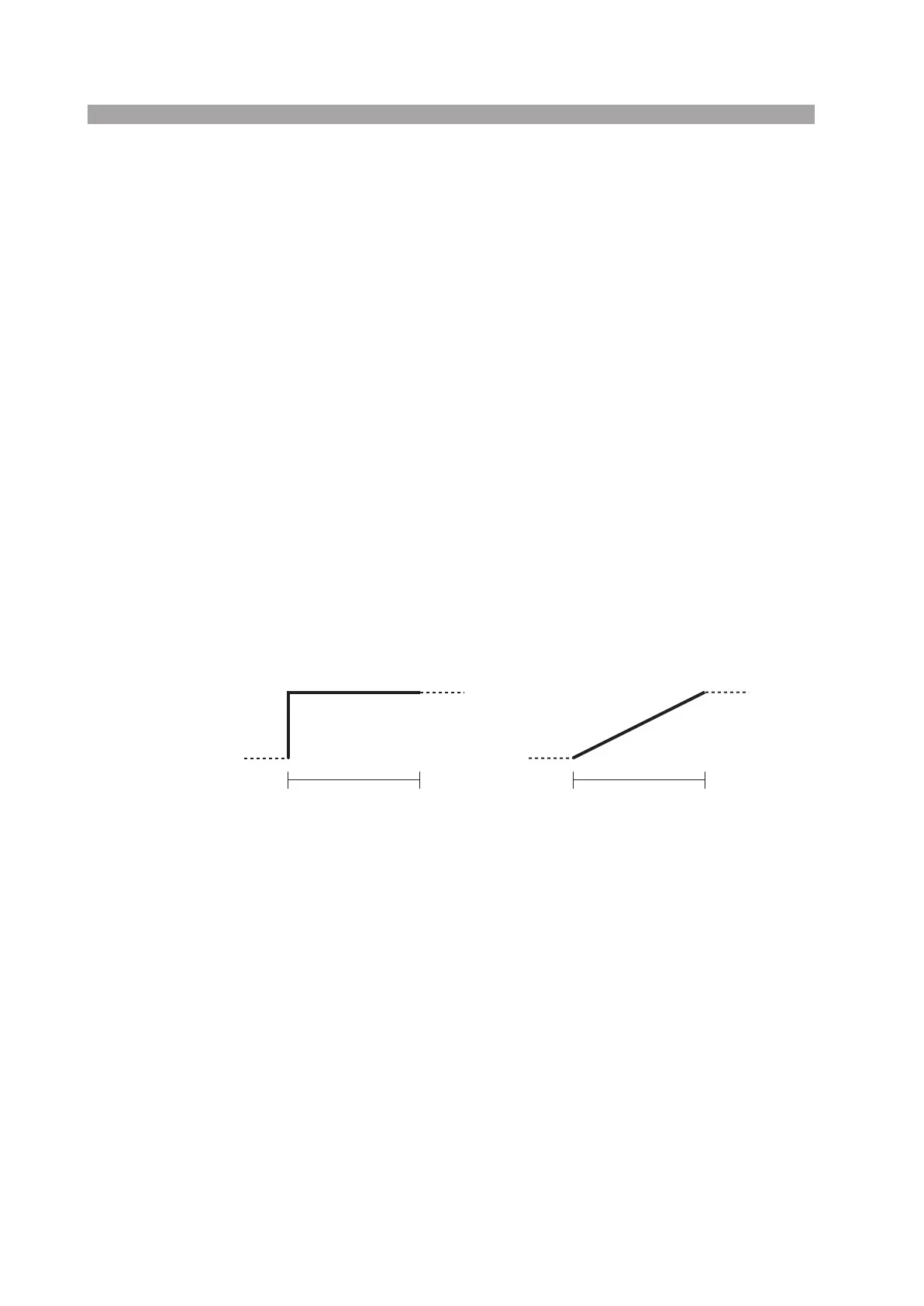6-16 Applied Operation PLZ-4W
• Step
In a single step, one execution condition can be specified. In other words, one oper-
ation of the executed waveform corresponds to one step. In normal sequence mode,
up to 256 steps can be shared among all programs (10 programs).
Below are the settings of a step.
• Step number
• __SET Setting at the operation mode (A, mS, V, or W)
• h:min:s.ms Step execution time (0:00:00.001 to 999:59)
• LOAD Load or not load (OFF/ON)
• RAMP Current change type (ON: slope, OFF: step)
• TRIG Output or not output the trigger signal during step execution
(ON/OFF)
• PAUSE Pause or not pause during step execution (ON/OFF)
■ Step execution pattern
Of the settings of a step, the execution pattern when RAMP (current change type),
TRIG (trigger output), or PAUSE is specified are indicated below.
• RAMP (current transition)
RAMP sets the current transition. When turned on, the current takes on a slope
form; when turned off, the current takes on a step form.
Fig. 6-12 RAMP sequence example
(Example) Setting: 10 A
Step transition (RAMP OFF)
Step execution time: 1 s
(Example) Setting: 10 A
Ramp transition (RAMP ON)
Step execution time: 1 s
1 s
10 A
1 s
10 A

